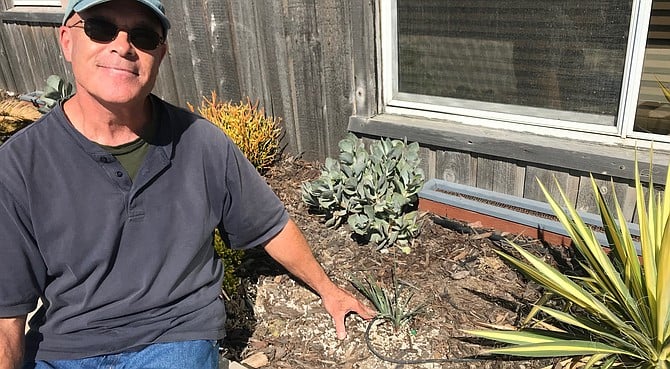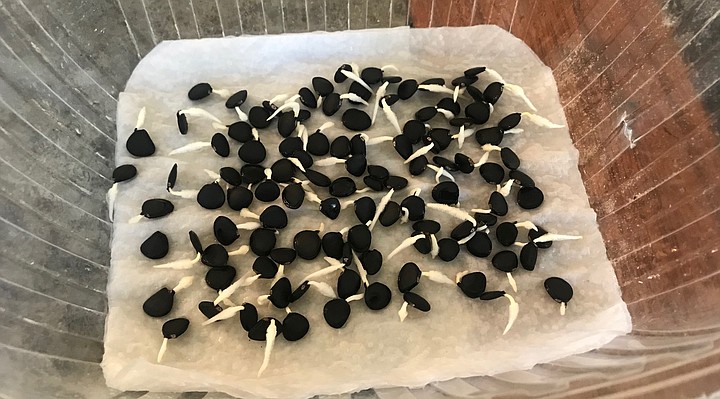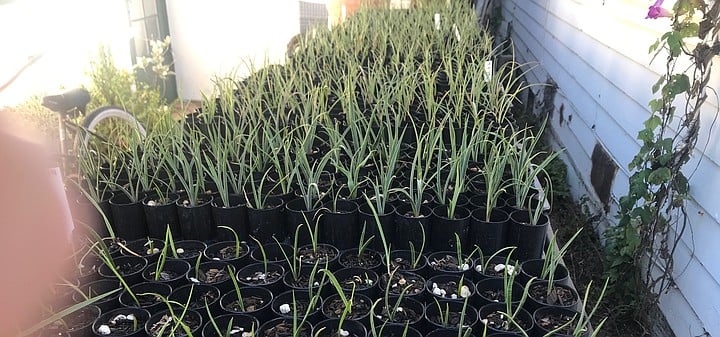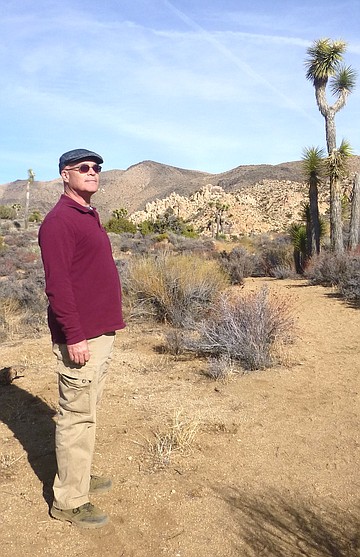 Facebook
Facebook
 X
X
 Instagram
Instagram
 TikTok
TikTok
 Youtube
Youtube

Three years ago, one of architect Bob Craig’s friends moved up to Joshua Tree in the high desert east of Palm Springs. Several hiking visits with his friend, into the Joshua Tree National Park, named after the unique shrubs found only in the high deserts of Southern California, Arizona, and Nevada, sparked a ten-month old endeavor that may end up saving an endangered ecosystem in the Southwest.

“The Joshua trees are dying. They’re not repopulating,” said Craig. He says about half the trees in the national park are dead or dying. “They’re just getting burnt. There’s not enough water.”
In Craig’s research, he found there was once a desert sloth, and a specific moth that would help pollinate the trees. “They don’t exist anymore,” he said.

Wondering if a Joshua tree would grow outside of the desert, he couldn’t find any nurseries that sold young Joshua trees. Only a few offered mature trees selling for thousands of dollars to landscapers.
Craig finally found an Arizona nursery that sold the tree’s seeds. With research, and trial and error, growing them from small black seedpods, he now has over 2,500 Joshua tree seedlings in a makeshift nursery at his Mission Beach home.

“I found most everything we believed is false,” said Craig. His seedlings are growing outside of the desert, don’t need full sun, and actually grow faster and stronger in moist soil. But they require a lot of time and attention.
The trees are fragile until they reach maturity in five to ten years. Craig says he’s lost about 30 percent of his seedlings since he started, including about 1,200 when he moved some to a larger greenhouse in Poway. The area was hotter than expected, and they didn’t get enough water.
Joshua trees only grow about a foot at year. It isn’t until they reach maturity of five feet that they start looking like the twisted, iconic photos in the 1987 top-selling U2 album by the same name. Craig says the unique look is really from limbs being knocked off by strong desert windstorms, or by animals.
There is no federal protection for the Joshua Tree. Craig says the Trump administration has so far resisted, because much of trees are on private land, thus protection would impede future desert resorts and commercial development.
However, Craig points out a new AM/PM gas station just opened up in the town of Joshua Tree, and they used mature trees in their highway frontage landscaping. “It’s the first time I’ve seen that,” he said, showing an appreciation for preserving the tree outside of the desert wilderness.
Its what he finds out at local street fairs in his booth selling seedlings. “People love talking about Joshua trees,” said Craig. “If they don’t buy a tree, they’ll give me a donation”
Craig’s mission, through his now-formed company, Joshua Tree Plant Adoptions, is to increase awareness of the tree’s plight, and make a viable business selling Joshua trees that appear, so far, to have the ability to grow anywhere. He can safely ship three- or six-inch seedlings. And he found, once the tree reaches six inches, the root structure could easily be split into three separate seedlings.
Eventually he would like to help the national park repopulate the trees. The trees he’s growing appear to be a match for the Southern California strain.
“Two million people visit Joshua Tree National Park each year. You know their number one reason for going?” Craig asks. “To see the Joshua trees.”


Three years ago, one of architect Bob Craig’s friends moved up to Joshua Tree in the high desert east of Palm Springs. Several hiking visits with his friend, into the Joshua Tree National Park, named after the unique shrubs found only in the high deserts of Southern California, Arizona, and Nevada, sparked a ten-month old endeavor that may end up saving an endangered ecosystem in the Southwest.

“The Joshua trees are dying. They’re not repopulating,” said Craig. He says about half the trees in the national park are dead or dying. “They’re just getting burnt. There’s not enough water.”
In Craig’s research, he found there was once a desert sloth, and a specific moth that would help pollinate the trees. “They don’t exist anymore,” he said.

Wondering if a Joshua tree would grow outside of the desert, he couldn’t find any nurseries that sold young Joshua trees. Only a few offered mature trees selling for thousands of dollars to landscapers.
Craig finally found an Arizona nursery that sold the tree’s seeds. With research, and trial and error, growing them from small black seedpods, he now has over 2,500 Joshua tree seedlings in a makeshift nursery at his Mission Beach home.

“I found most everything we believed is false,” said Craig. His seedlings are growing outside of the desert, don’t need full sun, and actually grow faster and stronger in moist soil. But they require a lot of time and attention.
The trees are fragile until they reach maturity in five to ten years. Craig says he’s lost about 30 percent of his seedlings since he started, including about 1,200 when he moved some to a larger greenhouse in Poway. The area was hotter than expected, and they didn’t get enough water.
Joshua trees only grow about a foot at year. It isn’t until they reach maturity of five feet that they start looking like the twisted, iconic photos in the 1987 top-selling U2 album by the same name. Craig says the unique look is really from limbs being knocked off by strong desert windstorms, or by animals.
There is no federal protection for the Joshua Tree. Craig says the Trump administration has so far resisted, because much of trees are on private land, thus protection would impede future desert resorts and commercial development.
However, Craig points out a new AM/PM gas station just opened up in the town of Joshua Tree, and they used mature trees in their highway frontage landscaping. “It’s the first time I’ve seen that,” he said, showing an appreciation for preserving the tree outside of the desert wilderness.
Its what he finds out at local street fairs in his booth selling seedlings. “People love talking about Joshua trees,” said Craig. “If they don’t buy a tree, they’ll give me a donation”
Craig’s mission, through his now-formed company, Joshua Tree Plant Adoptions, is to increase awareness of the tree’s plight, and make a viable business selling Joshua trees that appear, so far, to have the ability to grow anywhere. He can safely ship three- or six-inch seedlings. And he found, once the tree reaches six inches, the root structure could easily be split into three separate seedlings.
Eventually he would like to help the national park repopulate the trees. The trees he’s growing appear to be a match for the Southern California strain.
“Two million people visit Joshua Tree National Park each year. You know their number one reason for going?” Craig asks. “To see the Joshua trees.”
Comments